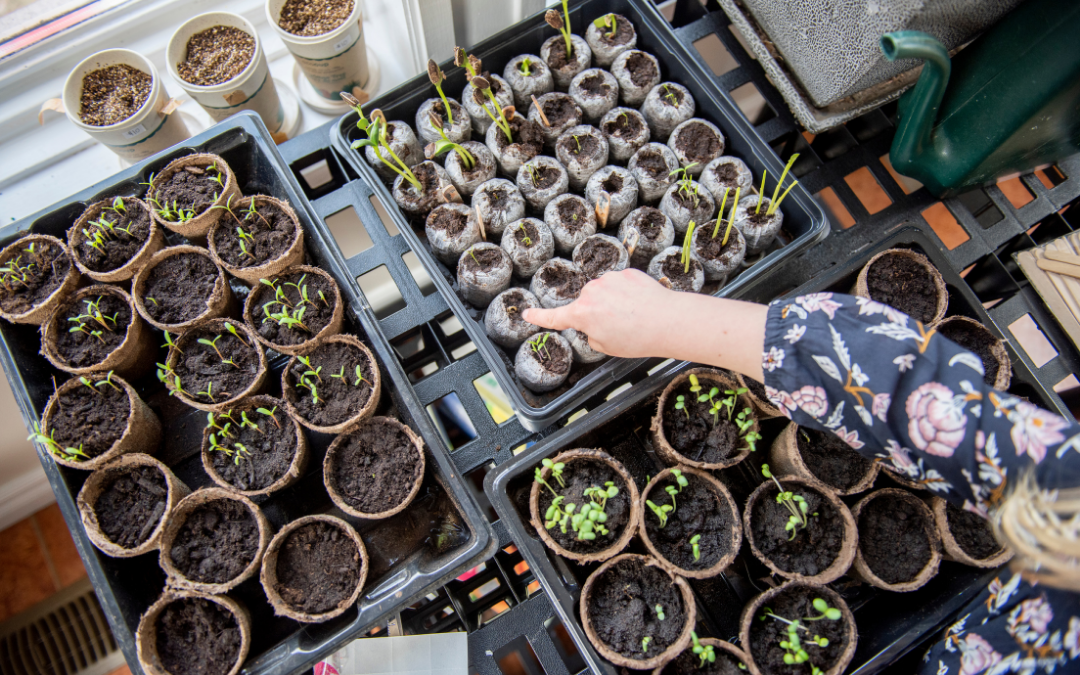The calendar doesn’t say spring, but gardeners are ready to go. Turning vegetable seeds into plants helps satisfy the urge to put hands in the soil. And the seed catalogs are showing up in mailboxes.
It’s best to seed cool-season crops such as lettuce, cabbage, kale and broccoli in flats in late February to early March in western Oregon. Warm-season crops such as tomatoes, peppers and eggplant should be sown in late March to early April.
Back up your seed-starting date from the dates when you want to transplant, for most crops that would be just after the last frost date in your area. In Tillamook County that is generally Mother’s Day, but there are various “micro-climates” in the county. For example, closer to the beach there is less likely chance of frost after the end of April, but up the river valleys, there could be a hard frost in mid-May. Check with the OSU Extension Office in Tillamook for more information about seed starting.
Germination starts when the seed takes up water, a process called imbibition.
During this fragile time in the life of a plant, it’s critical that seeds receive appropriate amounts of water, oxygen and light. At this point, starting seeds becomes a balancing act.
Seeds need enough water for imbibition, but if they get too much it can suffocate the developing seed or lead to root rot. If the soil temperatures are too cool, the seed won’t germinate and cold soil temperatures could also lead to damping-off, a disease caused by soil fungi.
To successfully start seeds, first select and clean the right container, such as plastic flats or repurposed yogurt containers with adequate drainage. Sterilize the containers if they have been in contact with soil in a bleach solution of one part bleach to nine parts water. It is possible to grow seedlings in biodegradable pots fashioned out of newspaper or eggshell cartons, but the material takes a long time to break down in the soil after transplanting and the plant starts might not become well-established.
Next, find a seed starting mix at your local nursery or garden supply store. These mixes are not actually soil, but rather a sterile growing medium used to support growth, generally consisting of organic materials such as peat moss or coconut fiber and perlite. The seeding material will retain water for seed germination and seedling growth and also drain well. Place the flats on a seedling heat mat, which can be purchased at nurseries and garden supply stores. The mat will heat the seeding material to promote quick germination.
It’s important to have enough light. Use high-input grow lights or standard shop lights with fluorescent bulbs. Position the lights about 2 inches above the flat and move the shop lights up as the seedlings start to grow.
To tell if the seeds are getting enough water, the growing medium should always feel damp to the touch just under the surface. Using a spray bottle is the most efficient way to water.
As they get larger some plants like tomatoes and melons should be “stepped up” from flats into a 4-inch pot and then potentially into a gallon-size pot prior to transplanting.
Local garden coach, Master Gardener Karen Matthews, has been teaching seed-starting workshops at Alder Creek Farm for more than a decade. For a comprehensive video about her tried and true methods for seed starting, see the video below for tips and how-tos: https://youtu.be/kYB-ocGihBc
The OSU Extension guide also offers additional advice on starting seeds and a calendar of dates for planting various vegetables. Explore more resources from OSU Extension here.
Source: Kym Pokorny, OSU Communications
AUTHOR: Laura Swanson, Tillamook County Pioneer Editor
Other wellness questions? Email us at info@tillamookcountywellness.org. For more local health and wellness information, visit www.tillamookcountywellness.org or follow Tillamook County Wellness on Facebook and Instagram.

